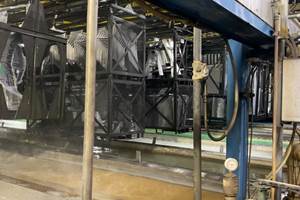Dirty Decisions
How soil type impacts cleaner selection
When I’m asked for a cleaner recommendation, the first piece of information I want to have is the soil to be removed. This knowledge enables me to identify a general chemistry classification. Yet the recommendation of a specific cleaner depends on additional criteria, including:
- Degree of cleanliness needed
- Substrates involved
- Part geometry
- Method of application/cleaning equipment.
The degree of cleanliness needed dictates whether a cleaning step is needed at all. If cleaning is needed, is cleanliness dictated by appearance or performance? Rinse requirements are also determined at this time.
Welcome! You’ve unlocked premium content.
The substrate(s) involved may limit chemistry selection. Ferrous parts may require inhibition to prevent flash rusting. Aluminum will be attacked by hydroxides, and copper alloys may be tarnished by amines. Plastics and rubbers may be adversely affected by some hydrocarbons. All surfaces exposed to the cleaning chemistry must be considered to ensure compatibility.
Part geometry dictates the type of cleaning process needed to best remove all soils. Small parts may nest together. Blind cavities may entrap soil/cleaner. Part size and/or weight may preclude transfer in baskets or submerging in tanks, thus requiring a tunnel washer, cleaning in place or manual applications.
Part configuration also dictates the type of cleaning equipment best suited for the job. Small, nested parts may be best cleaned in a rotating basket, tumbler or auger equipment. Parts with complex geometry may require an immersion system and flat surfaces may be most efficiently cleaned in a spray washer. Mechanical action and human exposure will dictate whether high-foaming or low-foaming chemistry may be tolerated or whether corrosive or high-vapor materials are acceptable.
Production needs determine the length of time available for cleaning. Short process times will require greater mechanical action, while long cleaning cycles may incorporate an immersion agitation or soak method having minimal mechanical action. Small production runs may prohibit capital equipment expenditures and dictate reliance on manual methods for cleaning.
Classifying Cleaners
Cleaner chemistries may be solvent- or water-based (aqueous). Water-based cleaning solutions may be as simple as water and surfactant, or may be complex mixtures containing more than a dozen separate substances ranging from a blend of organic surfactants, organic or inorganic alkalinity builders, chelating agents and sequestrants to corrosion inhibitors. Some processes require water rinsing for complete residue removal while other systems rely on cleaner residues to provide in-process or long term corrosion protection.
Hydrocarbon solvent cleaners may be single-component chemistries or blends containing a variety of hydrocarbons, emulsifiers, activators and inhibitors. Some completely evaporate leaving no residue, while others require a water or solvent rinse for complete removal of all soils and cleaner residues. Typical solvent-based and aqueous cleaner chemistry classifications are shown in Table 1 (below).
|
Table 1: Aqueous and Solvent-Based Cleaner Chemistries
|
||
|
Aqueous Chemistries
|
||
| Solvent Type | pH Range | Typical Components |
| Acid | 0–5 | Mineral acids, organic acids, chelator, surfactant, water |
| Neutral | 6–9 | Surfactant, chelator, oxygenated hydrocarbons, water |
| High-Alkaline | 10–12 | Phosphate, carbonate, silicate, chelator, surfactant, amines, water |
| Caustic | 13–14 | High-alkaline components plus hydroxides, water |
|
Solvent-Based Chemistries
|
||
| Solvent Type | Examples | |
| Aliphatic | Mineral spirits, kerosene, odorless mineral spirits, Stoddard solvent, hexane |
|
| Aromatic | Toluene, acetone, heavy aromatic naptha, high-flash naptha, xylene | |
| Oxygenated | Terpenes, alcohols, glycol ethers, esters | |
| Halogenated | Bromine, chlorine, fluorine | |
Cleaning Mechanisms
The objective of any cleaning operation is to separate the soil from the substrate. A number of mechanisms may be employed to accomplish this. These include:
- Solubilization, or dissolution of soil in cleaning medium
- Emulsification, in which mutually immiscible components are uniformly dispersed in the fluid
- Wetting, where surface and interfacial tension are reduced with surfactants, allowing the cleaner to penetrate the soil-substrate bond
- Saponification, or reaction of free alkali with fatty acids to form water-soluble soaps
- Sequestration, in which undesirable ions are deactivated and prevented from reacting with materials that would form insoluble products
- Displacement of soil by mechanical action, as in high-pressure spray or ultrasonic cleaning.
For solubilization, the adage “like dissolves like” definitely applies. Polar soils will dissolve in polar solvents including water, alcohols and glycols.
Emulsification cleaning can work well for organic soils such as oils and greases, which are emulsified in aqueous solutions with the use of anionic or non-ionic surfactants. Oily soils are undercut with surface-active solutions; the soil is pushed away from the substrate and carried off by the cleaning agent.
In saponification, a chemical reaction takes place. Alkalinity builders are chemically consumed as they react with fatty soils. Cleaning performance may be enhanced by the formation of alkaline soaps; however, foaming may also be increased. Bath life may be shortened if soaps accumulate.
Sequestration deactivates undesirable ions and prevents them from reacting with materials that would form insoluble products—for example, calcium reacting with fatty acids to form hard water soap scum. Sequestering agents are consumed as they bind with ions and tie up undesirable calcium and magnesium salts to render them inactive. Formation of scale and soap scum is kept to a minimum.
Mechanical action enhances cleaning performance. Soils are physically bombarded from the surface, and the cleaning agent prevents redeposition of soils on the cleaned surface. The displaced soils can be removed by filtration to extend bath life.
Hydrocarbon solvent cleaners typically clean by solubilization. Aqueous neutral cleaners typically clean by emulsification or wetting in conjunction with displacement depending on the equipment used. High-alkaline and caustic aqueous cleaners may incorporate all of the above mechanisms depending on the soil involved and the equipment used.
Soil and Chemistry Selection
A broad range of soils may be encountered in industrial manufacturing applications. Soil types that may be involved in addition to routine shop oils, dirt and fingerprints include cutting oils, polishing rouge, ink, stamping lubricants, dry lube, pitch, drawing compounds, greases, oxides, hydraulic oils, honing oil, scale, lapping compounds, adhesives, carbon, buffing compounds and fluxes.
Machining fluids may be straight oils, soluble oils, semi-synthetics or synthetic fluids used to transfer heat in metal removal or chip-making operations. Napthenic and paraffin oils are commonly used. Additional components may include surfactants; emulsifiers; fatty acids and amines; extreme-pressure (EP) agents such as chlorine, sulfur or phosphorus; and synthetic polymers.
Stamping lubricants are soap-, petroleum- or synthetic-based fluids with varying viscosities depending on the metal and degree of metal movement involved. EP agents may be added for severe metal forming applications. Drawing compounds may contain fatty acids, petroleum oils or synthetic-based fluids, as well as viscosity and EP additives used to promote metal flow during the drawing process.
Dry lubes may be blends of soaps, petroleum oils, synthetic polymers or fine mineral powders like talc to transfer heat and promote metal movement. Greases are partially reacted soaps, petroleum oils or polymeric blends often containing a mineral such as molybdenum or lithium. Lapping, buffing and polishing compounds are typically reacted soaps, petroleum oils or polymeric blends containing a fine abrasive such as talc or pumice.
All these oily-type soils may be removed with caustic, high-alkaline or neutral pH aqueous cleaners or with solvent solutions.
Inorganic soils typically encountered in industrial cleaning applications include metal oxides, tarnish and rust. Also common is scale, a build-up of water-insoluble metal salts including hard water scale (calcium and magnesium carbonates) and soap scum (mineral salts of fatty acids). Carbonized soils include polymerized oils and greases. Inorganic soils are best removed with acids, strong hydroxides and/or chelating agents.
Reactive soils such as inks may be water-soluble or solvent-based monomers or polymers.
Adhesives are polymers, especially acrylates, with or without solvent. Reactive soils frequently clean best cold. Aromatic solvents, acetates or acetic acid (vinegar) are effective, as are some surfactants containing available free radicals.
Several varieties of flux are commonly used, including No-Clean (NC), organic acid (OA), rosin and lead-free fluxes. NC materials are blends of surfactants and/or rosins. As the name suggests, these fluxes frequently do not require cleaning. If cleaning is desired, water and/or mild detergent are adequate.
Organic acid (OA) flux is a blend of organic fatty acids such as succinic, glutaric or adipic acids. These residues are readily removed with water. Aged soils may require a mild alkaline detergent for optimum results.
Rosin fluxes are blends of rosin with activators. Designations R, RA and RMA indicate the concentration of activators. Solvent cleaners or aqueous high-alkaline/solvent blends are effective at removing rosin based fluxes.
|
Table 2: Cleaning Properties of Flux Residues
|
||
| Flux Type | Residue Removal | Ease of Cleaning |
| No Clean (NC) | Not needed; optional | Very easy |
| Organic Acid (OA) | Water wash; mild detergent | Easy |
| Rosin (R, RA, RMA) | Alkaline or solvent; alkaline/solvent blend | Moderate |
| Lead-Free (LF) | Alkaline/solvent blend | Difficult |
| Mineral Acid (MA) | High-alkaline or high- 'alkaline/solvent blend | Moderate |
Lead-free fluxes are typically blends of modified rosins and organic acids reflowed to a higher temperature. Considered more difficult to remove, these fluxes may require blends of solvents with alkalinity builders to clean satisfactorily. Additional exposure time may also be required depending on the chemistry and age of the soil.
Table 2 (Above) provides a summary of flux residue properties and ease of cleaning.
Environmental issues and constant technological advances make electronics cleaning ever more challenging. Low component stand-offs and highly populated surfaces, along with higher reflow temperatures, make cleaning more difficult.
Soil V. Cleaner Chemistry
Solvent cleaners typically dissolve soils, while aqueous neutral and alkaline cleaners rely on a variety of mechanisms and chemical reactions to do the job. Table 3 (below) lists a variety of soils and shows the chemical effect each has on solvent, aqueous neutral and aqueous alkaline and caustic solutions. Anticipated bath life is also shown. When cleaning oily soils such as machining and stamping fluids, drawing compounds and dry lubes, aqueous bath life can be extended by oil skimming and filtration.
|
Table 3: Soil Effect on Cleaner Chemistry
|
|||||
| Soil | Solvent | Solvent Bath Life | Aqueous Neutral | Aqueous Alkaline/Caustic | Aqueous Bath Life |
| Machining oil | Dissolve | Moderate | Emuls/wet | Emuls/wet | Long |
| Stamping lube | Dissolve | Moderate | Emuls/wet | Emuls/wet | Long |
| Drawing comp. | Dissolve | Moderate | Emuls/wet | Emuls/wet | Long |
| Dry lube | Dissolve | Moderate | Emuls/wet | Emuls/wet | Long |
| Lap/buff/polish | Dissolve | Moderate | Wet | Wet/saponify | Moderate |
| Grease | Dissolve | Fair | Wet | Wet/saponify | Moderate |
| Oxides | Ineffective | Long | Sequester | Sequester/dissolve | Moderate |
| Scale | Ineffective | Long | Sequester | Sequester/dissolve | Moderate |
| Carbon | Ineffective | Long | Sequester | Sequester/dissolve | Moderate |
| Ink | Dissolve | Fair | Wet/dissolve | Wet/dissolve | Fair |
| Adhesive | Dissolve | Fair | Wet/dissolve | Wet/dissolve | Fair |
| Fluxes | Dissolve | Moderate | Wet | Wet/saponify | Long |
In solvent cleaning, each solvent type and blend will perform differently depending on the soil chemistry and the cleaning method used. Oxygenated solvents work best on polar soils, while aliphatic and aromatic solvents work best on non-polar soils. Additives make cleaning chemistries unique, and the supplier may recommend one product over another depending on the method of application and desired cleaning results. The rate of evaporation may be the driving factor; flash point or environmental concerns also may dictate chemistry choice.
Aqueous cleaners are selected based on substrate compatibility or foaming characteristics. Neutral products are generally favored over corrosive caustic solutions if performance is similar. Blends of alkalinity builders, wetting agents and solvents often provide optimum performance when a variety of soils are involved. You should consult your cleaning chemistry supplier for help identifying the best product that can optimize your cleaning needs.
|
A Cleaning Glossary |
|
Aliphatic: A group of organic chemical compounds in which the carbon atoms are linked in open chains. Alkalinity builders: Compounds that contribute to and maintain a level of alkalinity of pH above 7. Aromatic: Chemical compounds containing one or more benzene rings. Caustic: A corrosive substance that will destroy or irreversibly damage another substance that it contacts. Chelating agent: A compound that reacts with a metal ion to produce a bi- or multidenate liquid; an organic compound in which atoms form more than one coordinate bond with metals in solution. Emulsification: The formation of a mixture of two liquids where one is in the form of fine droplets and is dispersed in the other. Halogenated: Treated or reacted with a halogen; formally derived from another compound by the replacement of one or more hydrogen atoms with a halogen such as chlorine, bromine or fluorine. Hydrocarbon: An organic compound containing only carbon and hydrogen. Non-polar: A molecule where electrons are distributed more symmetrically. Non-polar molecules do not have an abundance of charges at opposite ends; thus they are water-repelling and will not easily dissolve in water. Polar: Having a pair of equal and opposite charges. Saponification: The hydrolysis of an ester under basic conditions to form an alcohol and the salt of a carboxylic acid. Sequestrant: Any compound that will inactivate a metallic ion by forming a water-soluble complex in which the metal is held in nonionizable form. |
Related Content
Coatings Plant Evolves with Market Trends
Expanding its focus from exclusively serving the RV industry, one of this company’s stand-alone coatings plant has successfully extended its services to additional markets.
Read MoreECOAT24 Issues Call for Speakers
Don't miss your chance to apply to speak at ECOAT24. Submit your abstract by June 26, 2023.
Read MoreInstalling an Ecoat Line
Thinking of investing in electrocoating capabilities? George Lovell, coatings plant manager for Lippert, discusses considerations you should keep in mind as you add your ecoat line.
Read MoreConveyors and Paint Systems
Choosing the right conveyor system, coating technology, and ancillary equipment.
Read MoreRead Next
Education Bringing Cleaning to Machining
Debuting new speakers and cleaning technology content during this half-day workshop co-located with IMTS 2024.
Read MoreDelivering Increased Benefits to Greenhouse Films
Baystar's Borstar technology is helping customers deliver better, more reliable production methods to greenhouse agriculture.
Read MoreA ‘Clean’ Agenda Offers Unique Presentations in Chicago
The 2024 Parts Cleaning Conference, co-located with the International Manufacturing Technology Show, includes presentations by several speakers who are new to the conference and topics that have not been covered in past editions of this event.
Read More




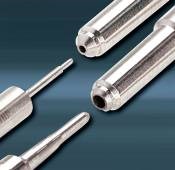
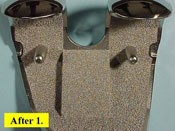
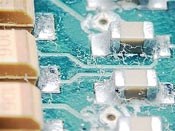
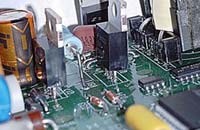










.jpg;maxWidth=300;quality=90)


